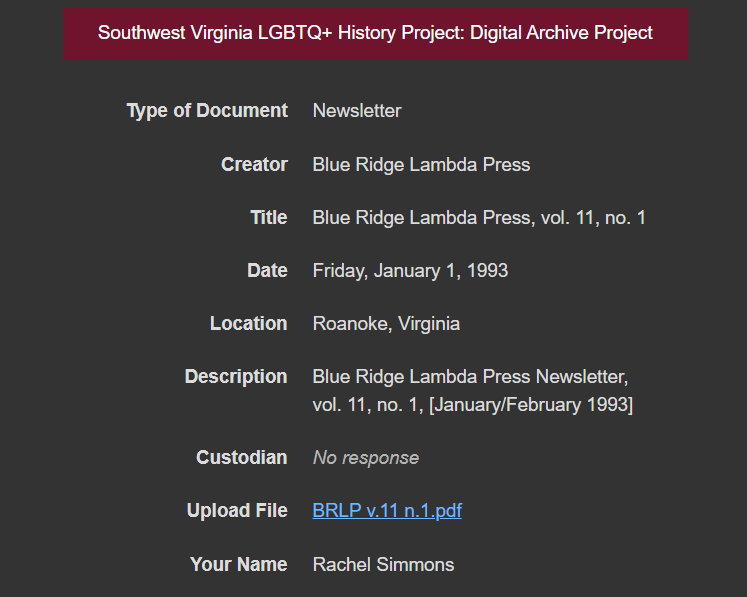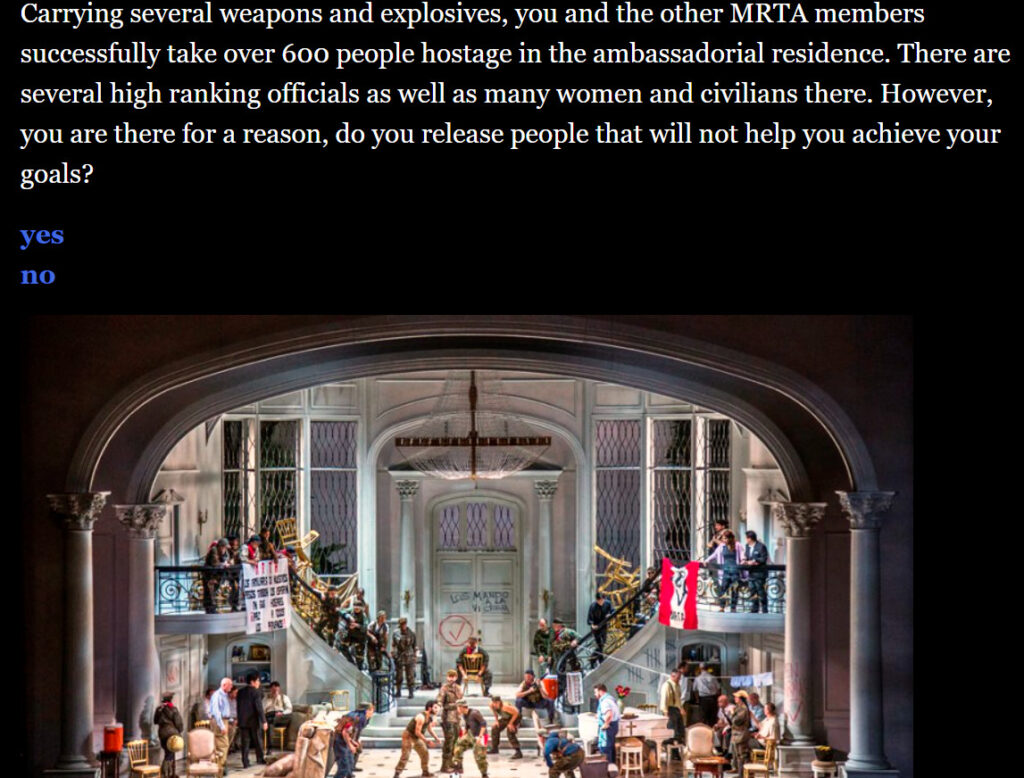Skill 1
Hi, my name is Rachel. I am a history major with a Spanish minor. I am finishing my fourth year here at Roanoke. I am from a small town in New Hampshire where I spend my time with my cat, Oakley. Last year I had the opportunity to go to Argentina and practice my Spanish while studying Argentinian women’s history. I also had the chance to work at the only— and oldest— natural history museum in New Hampshire, The Libby Museum.
Skill 2
This is an example of applying metadata to the digitized version of the Blue Ridge Lambda Press newsletter, vol. 11, no. 1. This newsletter is part of the Southwest Virginia LGBTQ+ History Project: Digital Archive Project.
;)..
:).
;).
.
Skill 3
OCR Article from the Public Ledger about Victoria Woodhull
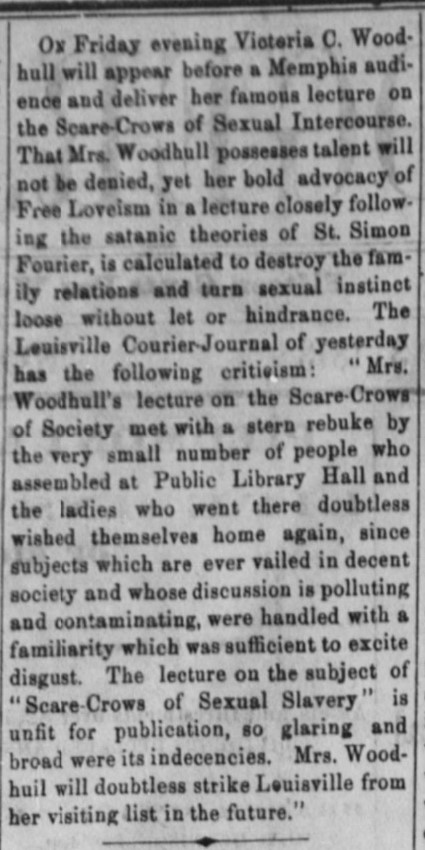
Victoria Woodhull appears several times in this edition of Memphis, Tennessee’s Public Ledger, though this article, in particular, seems quite interesting. The article initially seems to give her credit as someone who undeniably has talent before stating that what she teaches follows satanic theory and is being used to destroy families and release sexuality. The author of the article also seems keen on Woodhull not visiting based on another publication’s opinion being quoted within the article, an opinion that does not take kindly to Mrs. Woodhull or her lectures. The publication that is quoted within the article seems to make an assumption about the reception of Woodhull’s lecture. Hence, I think it would be interesting to see the true reception of the lecture from the people who actually attended, both in Louisville and in Memphis after Woodhull made her visit.
.
.
.
.
Comparing presidential inaugural addresses, Wilson (1917) v Harding (1921), by using machine reading.
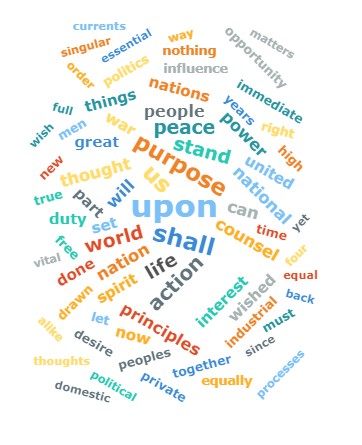
Inaugural Address, March 5, 1917.
The American Presidency Project
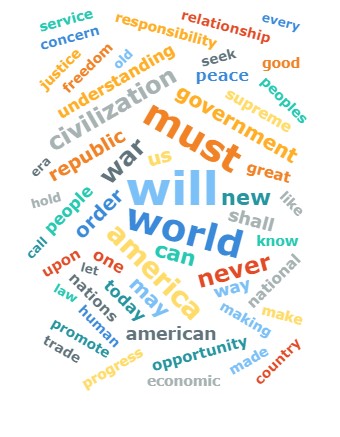
Inaugural Address, March 4, 1921.
The American Presidency Project
.
.
.
.
.
.
.
.
.
.
.
I decided to look at the two presidential addresses from before and after World War I, specifically from 1917, a month before the US joined the war, and 1921, a little over two years after the war had ended. I find the differences between the two addresses interesting because Wilson, one month before entering the US into the first world war, uses words such as “world”, “power”, “peace”, “war”, “purpose”, and “action”. Since Wilson was the incumbent and had been president for the first three years of the war, I’m curious as to how important of a role it played in his campaign and subsequent election. Harding, on the other hand, uses words such as “new”, “us”, “America”, and “civilization”. And, while Harding too uses the words “world” and “war”, he seems to be speaking about recovering after the war and moving towards a new future. Another interesting point to note is that while Harding used both “America” and “American” in his speech, Wilson used words like “domestic” and “nation” which may emphasize what the two presidents were focused on when it came to their upcoming terms.
Using machine reading to research geoglyphs
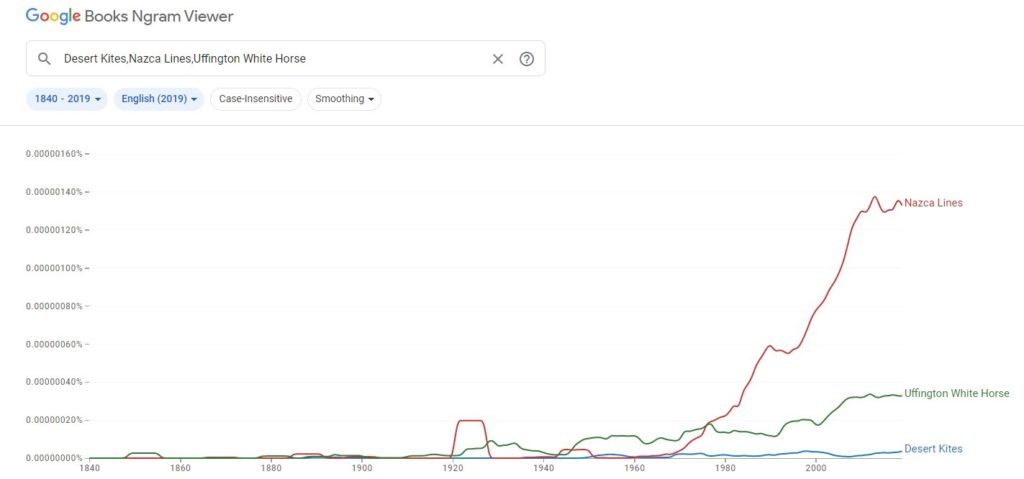
I wanted to see how interest in some of the more prominent geoglyphs changed over time as they were discovered and rediscovered both by scholars and the general public. The difference in the lines is quite drastic though I imagine that some of that is due to the geoglyphs’ popularity, location, and overall mysteriousness. The Nazca lines peak briefly in the 1920s when the first scholar began to study them but drops again until the 1940s when the first scholars to view them aerially began their study. However, the line drops once more until the 1970s when their mysteriousness led to an increase in popularity among the general public and continued to increase until it hit its peak in 2013. Interestingly, the Arabian Desert Kites and the Uffington White Horse also begin to increase around the 2010s. The Uffington White Horse had experienced a few increases and decreases throughout the 20th century but seems to have been steadily rising. The Desert Kites have a significantly flatter line than the other two though I wonder if some of that is due to their location and the fact that they are not open as a tourist attraction. The Desert Kites, too, lack the mysteriousness of the Nazca Lines and the Uffington White Horse and as such, likely draw less attention from the public and scholars alike.
Skill 4
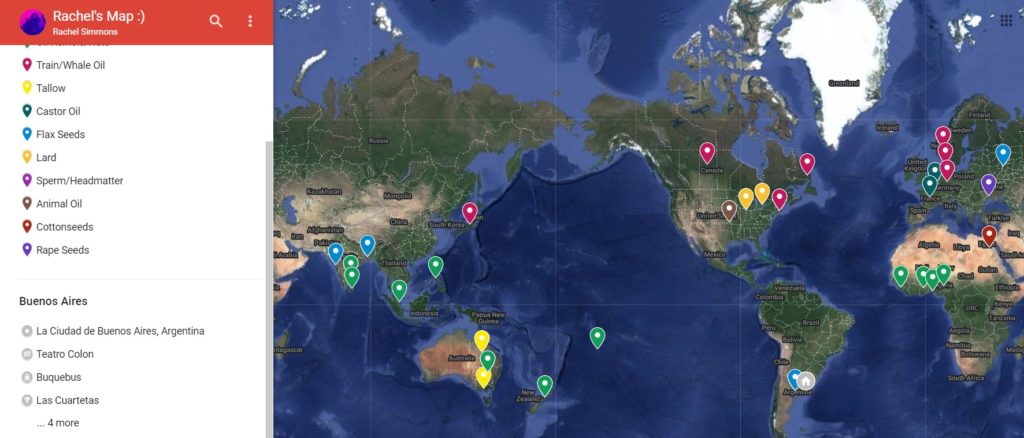
Buenos Aires, Argentina is a beautiful city that I had the opportunity to visit so I have marked out some of the famous and less famous locations that I got to visit while there. You can click on the map above or here to view those locations or the UK global fat supply locations from 1894-96 that have also been marked on the map. While Argentina was not a large source for the British, there was one location that supplied them however it was considerably further south than the city of Buenos Aires, almost 400 miles away. I find the location interesting because Argentina, produces quite a large amount of animal product in South America and it makes me curious about many things like why they were producers of flax seed rather than animal product.
Skill 5
Skill 6
Skill 7
Check out my Twine, a text-based video game. To play, click on this link. The link will pull up an HTML file. Click “Download.” Now, open the website for Twine, click “Use in your Browser.” Click “Library,” then “Import,” and choose the HTML file you just downloaded. Click on the imported story. Now click “Build,” then “Play.” Voila: it’s my game!
